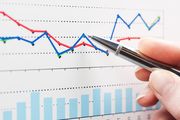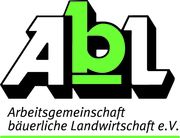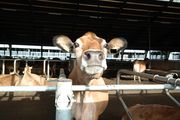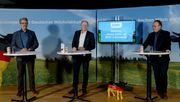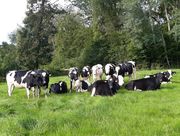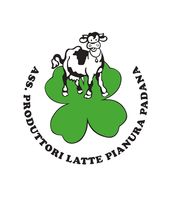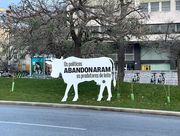EMB Newsletter January/February 2022
Newsletter as PDF
Contact
EMB - European Milk Board asbl
Rue de la Loi 155
B-1040 Bruxelles
Phone: +32 - 2808 - 1935
Fax: +32 - 2808 - 8265
Dear dairy farmers, dear interested parties,

I would like to start by wishing you all a Healthy and Happy 2022.
For the Danish dairy farmers, this year will be interesting in many respects. First, there are the unpredictable ways of the coronavirus and how it affects our daily lives, and our economy as a whole. Second, our government has proposed six eco-schemes under the new CAP: to support organic farming, for environmentally and climate-friendly grassland, extensification of lowland soils, plant production, biodiversity and sustainability, and for a new regulation model which will come into effect by 2026. Third, the redistribution of funds between Pillar I and Pillar II will have a serious impact on our level of income and farming as a whole, as it means a loss of up to 23,597 euros for the average Danish dairy farm. The government is trying to offset the losses with small slaughter premiums for young stock.
Fourth, a carbon tax is in the making, proposing a levy of 160 to 200 euros per tonne emitted. As the average cow emits 4 tonnes of CO2 equivalent, this means 6 to 7.3 cents per litre of milk produced. We sincerely hope that politicians will also see it as a part of their responsibility to explain to retailers and consumers why farmers need a higher price for their products.
I hope that reason will prevail in the end, and officials in charge in the Commission or government offices around Europe understand that it is not to be taken for granted that farmers continue producing food at a loss, while at the same time being accused of destroying nature, the air and the planet.
As our colleagues from the French dairy farmers organisation APLI show in this newsletter, the system is more than just in danger: the rural fabric is tearing apart, and even organic farmers cannot cope. There is a lack of young people to take over farms. The prospects are daunting and the financial hurdles are often too big to overcome. In this issue of our newsletter, a concrete example illustrates the costs a young person has to shoulder in order to set up a farm in Denmark, showing how big these hurdles really are.
In Germany, as in many other countries, farmers are actively involved in discussions on how to substantially improve the situation in the agricultural sector. Thanks to association platforms such as Agrardialog and Milchdialog, farmers can work on finding realistic solutions to give their peers new prospects. In this newsletter, our colleagues from AbL and BDM report on the current status of this important work.
In Italy, an emergency aid will be applied as of this month to encourage retailers to promote Italian milk towards their members whereas in neighbouring Switzerland, farmers are requested to step up their production but dairies aren’t ready to increase their prices. We also report on interesting developments from Ireland and Portugal.
The EMB and its member organisations will continue to fight for our livelihoods and our farms in 2022 too. We stand for fair prices. Prices that fully cover all costs of production, including sustainability costs and a fair income for all farmers in Europe!
We hope you enjoy reading our newsletter!
Kjartan Poulsen, EMB Vice-President and Chairman of Landsforeningen af Danske Mælkeproducenter (LDM)
BDM live: “Market, politics and BDM on the move”
Proper green milk? All right, but…
News from Italy
Milk production has lost over a quarter of its farms in a decade
Switzerland has seen no increase in milk prices in over a year
Irish dairy farmers looking to 2022 with an eye on costs of production
“Politicians have abandoned dairy farmers!”
Impressum
European Milk Board asbl
Rue de la Loi 155
B-1040 Bruxelles
Phone: +32 2808 1935
Fax: +32 2808 8265
E-Mail: office@europeanmilkboard.org
Website: http://www.europeanmilkboard.org

